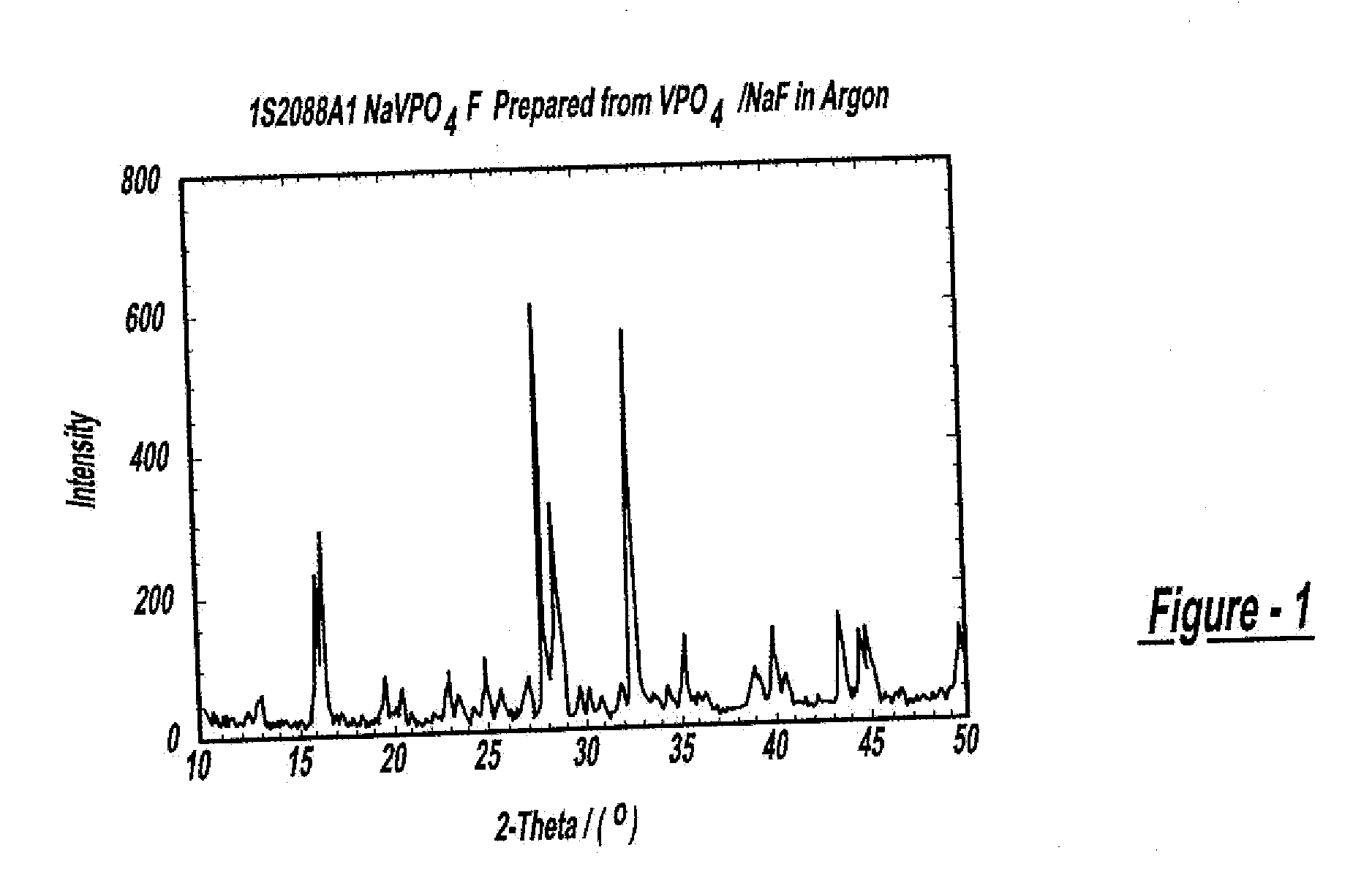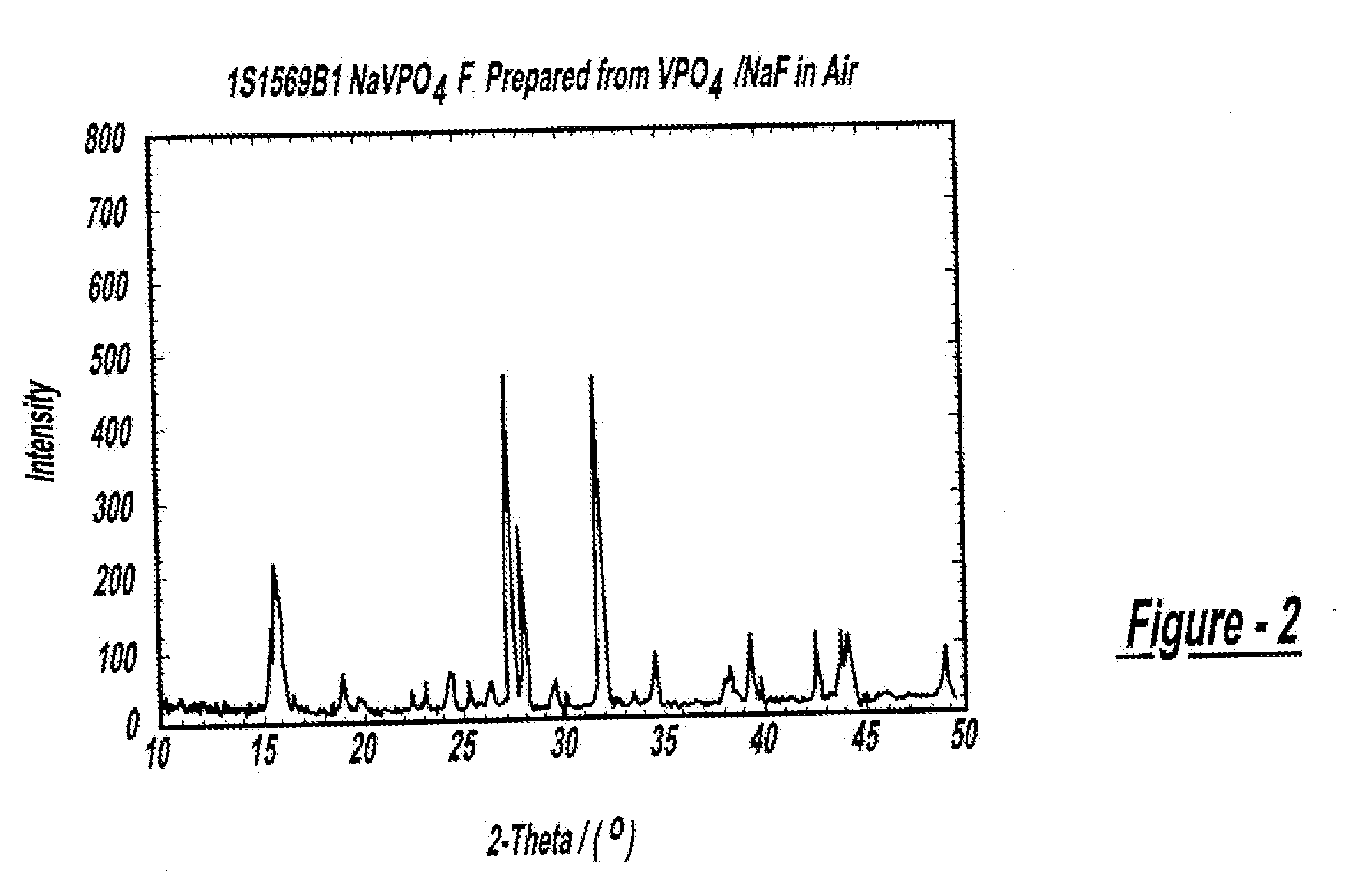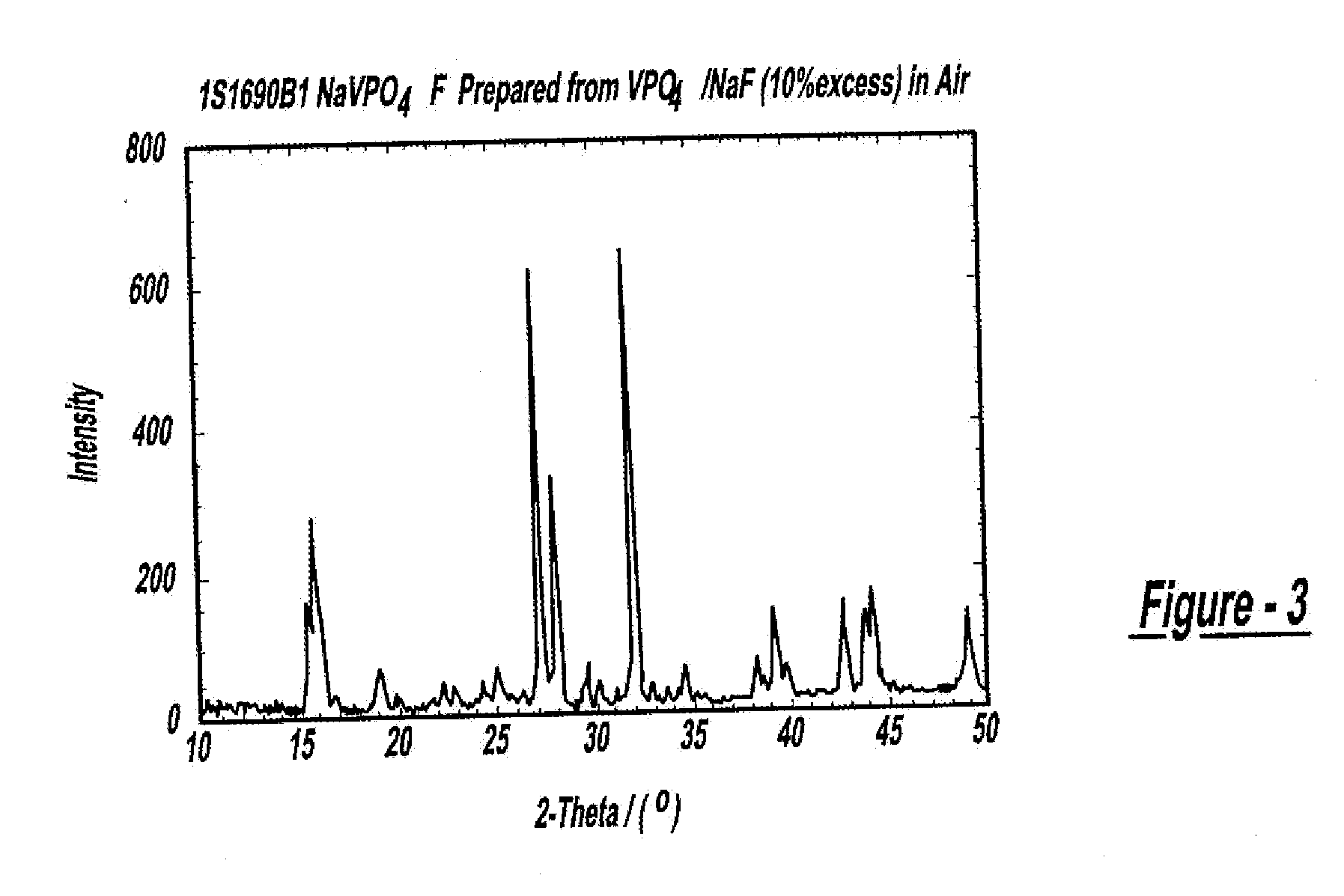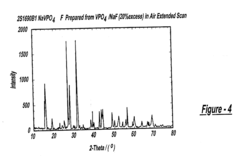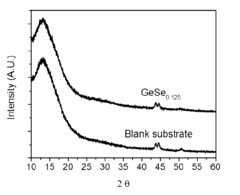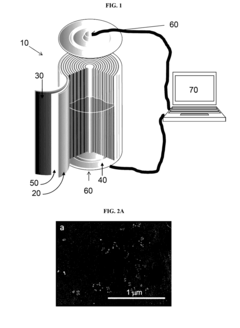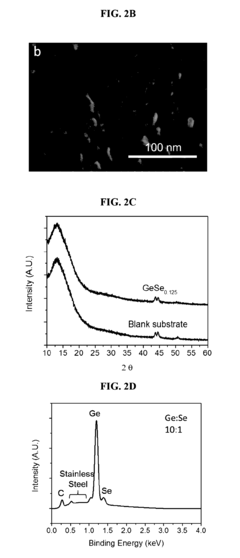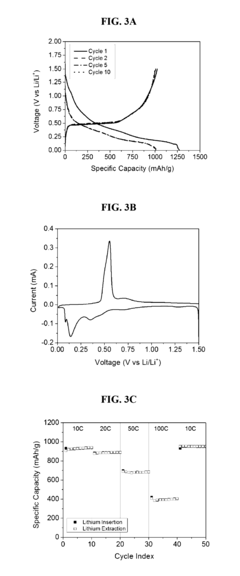Sodium Ion Batteries in Cold-Region Energy Systems
AUG 7, 20259 MIN READ
Generate Your Research Report Instantly with AI Agent
Patsnap Eureka helps you evaluate technical feasibility & market potential.
Sodium Ion Battery Evolution and Objectives
Sodium-ion batteries have emerged as a promising alternative to lithium-ion batteries, particularly in cold-region energy systems. The evolution of sodium-ion battery technology can be traced back to the 1980s, but significant advancements have been made in recent years. This technology has gained attention due to the abundance of sodium resources, lower costs, and improved safety compared to lithium-ion batteries.
The development of sodium-ion batteries has been driven by the need for sustainable and efficient energy storage solutions, especially in regions with extreme cold temperatures. Traditional lithium-ion batteries often suffer from reduced performance and capacity in low-temperature environments, making sodium-ion batteries an attractive option for cold-region applications.
Key milestones in the evolution of sodium-ion batteries include the development of high-performance cathode materials, such as layered oxides and polyanionic compounds, and the improvement of anode materials, including hard carbons and alloy-based materials. These advancements have led to increased energy density, improved cycling stability, and enhanced low-temperature performance.
The primary objectives of research on sodium-ion batteries in cold-region energy systems are multifaceted. First, there is a focus on improving the low-temperature performance of these batteries, aiming to maintain high capacity and power output even in sub-zero temperatures. This involves developing electrolyte formulations and electrode materials that can withstand extreme cold without significant degradation.
Another crucial objective is to enhance the overall energy density and cycling stability of sodium-ion batteries to make them competitive with lithium-ion counterparts. This includes optimizing the electrode materials, electrolyte compositions, and cell designs to maximize energy storage capabilities while ensuring long-term durability.
Researchers are also working on scaling up sodium-ion battery technology for practical applications in cold-region energy systems. This involves addressing challenges related to manufacturing processes, cost reduction, and integration with existing energy infrastructure. The goal is to develop commercially viable sodium-ion battery solutions that can be deployed in various cold-region applications, such as grid storage, electric vehicles, and portable electronics.
Furthermore, there is a growing emphasis on understanding the fundamental mechanisms of sodium-ion transport and storage in low-temperature conditions. This knowledge is crucial for designing advanced materials and optimizing battery performance in cold environments. Researchers are employing advanced characterization techniques and computational modeling to gain insights into the behavior of sodium-ion batteries under extreme cold conditions.
As the technology continues to evolve, the objectives also include exploring novel electrode materials, electrolytes, and cell architectures specifically tailored for cold-region applications. This involves investigating materials with unique properties that can maintain high ionic conductivity and structural stability at low temperatures, potentially revolutionizing energy storage solutions for cold climates.
The development of sodium-ion batteries has been driven by the need for sustainable and efficient energy storage solutions, especially in regions with extreme cold temperatures. Traditional lithium-ion batteries often suffer from reduced performance and capacity in low-temperature environments, making sodium-ion batteries an attractive option for cold-region applications.
Key milestones in the evolution of sodium-ion batteries include the development of high-performance cathode materials, such as layered oxides and polyanionic compounds, and the improvement of anode materials, including hard carbons and alloy-based materials. These advancements have led to increased energy density, improved cycling stability, and enhanced low-temperature performance.
The primary objectives of research on sodium-ion batteries in cold-region energy systems are multifaceted. First, there is a focus on improving the low-temperature performance of these batteries, aiming to maintain high capacity and power output even in sub-zero temperatures. This involves developing electrolyte formulations and electrode materials that can withstand extreme cold without significant degradation.
Another crucial objective is to enhance the overall energy density and cycling stability of sodium-ion batteries to make them competitive with lithium-ion counterparts. This includes optimizing the electrode materials, electrolyte compositions, and cell designs to maximize energy storage capabilities while ensuring long-term durability.
Researchers are also working on scaling up sodium-ion battery technology for practical applications in cold-region energy systems. This involves addressing challenges related to manufacturing processes, cost reduction, and integration with existing energy infrastructure. The goal is to develop commercially viable sodium-ion battery solutions that can be deployed in various cold-region applications, such as grid storage, electric vehicles, and portable electronics.
Furthermore, there is a growing emphasis on understanding the fundamental mechanisms of sodium-ion transport and storage in low-temperature conditions. This knowledge is crucial for designing advanced materials and optimizing battery performance in cold environments. Researchers are employing advanced characterization techniques and computational modeling to gain insights into the behavior of sodium-ion batteries under extreme cold conditions.
As the technology continues to evolve, the objectives also include exploring novel electrode materials, electrolytes, and cell architectures specifically tailored for cold-region applications. This involves investigating materials with unique properties that can maintain high ionic conductivity and structural stability at low temperatures, potentially revolutionizing energy storage solutions for cold climates.
Cold-Region Energy Market Analysis
The cold-region energy market presents unique challenges and opportunities for sodium-ion batteries. As extreme temperatures and harsh environmental conditions characterize these regions, traditional lithium-ion batteries often struggle to maintain optimal performance. This creates a significant market demand for alternative energy storage solutions that can operate efficiently in cold climates.
The market for energy storage systems in cold regions is primarily driven by the need for reliable power supply in remote areas, off-grid applications, and backup power systems. Industries such as mining, oil and gas exploration, and telecommunications require robust energy storage solutions that can withstand extreme cold without compromising performance. Additionally, the growing focus on renewable energy integration in cold regions, particularly wind and solar power, further amplifies the demand for efficient energy storage technologies.
Cold-region energy markets are experiencing substantial growth, with a particular emphasis on sustainable and resilient power systems. The increasing electrification of remote communities and the expansion of critical infrastructure in Arctic and sub-Arctic regions contribute to this market expansion. Furthermore, government initiatives aimed at reducing diesel dependency and promoting clean energy solutions in cold climates are creating favorable market conditions for innovative energy storage technologies.
Sodium-ion batteries show promising potential in addressing the specific needs of cold-region energy markets. Their ability to operate at lower temperatures compared to lithium-ion batteries makes them an attractive option for these challenging environments. The abundance and lower cost of sodium resources also align well with the economic considerations of remote and often resource-constrained cold regions.
However, the market adoption of sodium-ion batteries in cold-region energy systems faces several challenges. These include the need for further technological advancements to improve energy density and cycle life, as well as the establishment of a robust supply chain and manufacturing infrastructure. Additionally, the market must overcome the inertia of existing lithium-ion battery dominance and address concerns related to the long-term reliability and safety of sodium-ion technology in extreme cold conditions.
Despite these challenges, the cold-region energy market for sodium-ion batteries is poised for significant growth. As research and development efforts continue to enhance the performance and cost-effectiveness of sodium-ion technology, its market share in cold-region applications is expected to expand. This growth is likely to be particularly pronounced in sectors such as renewable energy integration, emergency power systems, and electric vehicle applications tailored for cold climates.
The market for energy storage systems in cold regions is primarily driven by the need for reliable power supply in remote areas, off-grid applications, and backup power systems. Industries such as mining, oil and gas exploration, and telecommunications require robust energy storage solutions that can withstand extreme cold without compromising performance. Additionally, the growing focus on renewable energy integration in cold regions, particularly wind and solar power, further amplifies the demand for efficient energy storage technologies.
Cold-region energy markets are experiencing substantial growth, with a particular emphasis on sustainable and resilient power systems. The increasing electrification of remote communities and the expansion of critical infrastructure in Arctic and sub-Arctic regions contribute to this market expansion. Furthermore, government initiatives aimed at reducing diesel dependency and promoting clean energy solutions in cold climates are creating favorable market conditions for innovative energy storage technologies.
Sodium-ion batteries show promising potential in addressing the specific needs of cold-region energy markets. Their ability to operate at lower temperatures compared to lithium-ion batteries makes them an attractive option for these challenging environments. The abundance and lower cost of sodium resources also align well with the economic considerations of remote and often resource-constrained cold regions.
However, the market adoption of sodium-ion batteries in cold-region energy systems faces several challenges. These include the need for further technological advancements to improve energy density and cycle life, as well as the establishment of a robust supply chain and manufacturing infrastructure. Additionally, the market must overcome the inertia of existing lithium-ion battery dominance and address concerns related to the long-term reliability and safety of sodium-ion technology in extreme cold conditions.
Despite these challenges, the cold-region energy market for sodium-ion batteries is poised for significant growth. As research and development efforts continue to enhance the performance and cost-effectiveness of sodium-ion technology, its market share in cold-region applications is expected to expand. This growth is likely to be particularly pronounced in sectors such as renewable energy integration, emergency power systems, and electric vehicle applications tailored for cold climates.
Sodium Ion Battery Challenges in Low Temperatures
Sodium-ion batteries face significant challenges when operating in cold-region energy systems, particularly at low temperatures. The primary issue stems from the reduced ionic conductivity of the electrolyte and slower kinetics of electrode reactions as temperatures drop. This results in decreased battery performance, manifested through reduced capacity, power output, and overall efficiency.
One of the main challenges is the increased internal resistance of the battery at low temperatures. As the electrolyte becomes more viscous, ion mobility is hindered, leading to slower charge transfer processes. This not only affects the battery's ability to deliver power but also impacts its charging capabilities, potentially leading to lithium plating and subsequent safety concerns.
The solid electrolyte interphase (SEI) formation and stability also become critical issues in cold environments. The SEI layer, crucial for protecting the electrode surface and ensuring long-term cycling stability, may not form properly or may become unstable at low temperatures. This can lead to continuous electrolyte decomposition and accelerated capacity fade.
Another significant challenge is the structural stability of electrode materials. Temperature fluctuations can cause mechanical stress on the electrode particles, leading to cracking and loss of electrical contact. This is particularly problematic for sodium-ion batteries, as sodium ions are larger than lithium ions and can cause more severe volume changes during cycling.
The choice of electrolyte becomes even more critical in cold-region applications. Traditional carbonate-based electrolytes tend to freeze or become highly viscous at low temperatures, severely limiting battery performance. Developing electrolytes with lower freezing points and maintaining good ionic conductivity at low temperatures is a key research focus.
Furthermore, the cathode materials used in sodium-ion batteries often exhibit poor rate capability at low temperatures. This is due to the sluggish sodium-ion diffusion within the crystal structure of the cathode materials, which is exacerbated in cold conditions. Improving the intrinsic properties of cathode materials to facilitate faster ion transport at low temperatures is crucial for enhancing cold-weather performance.
Addressing these challenges requires a multifaceted approach, combining materials science, electrochemistry, and engineering solutions. Researchers are exploring various strategies, including developing novel electrolyte formulations, designing nanostructured electrode materials with improved ion diffusion pathways, and implementing advanced battery management systems tailored for cold-weather operation.
One of the main challenges is the increased internal resistance of the battery at low temperatures. As the electrolyte becomes more viscous, ion mobility is hindered, leading to slower charge transfer processes. This not only affects the battery's ability to deliver power but also impacts its charging capabilities, potentially leading to lithium plating and subsequent safety concerns.
The solid electrolyte interphase (SEI) formation and stability also become critical issues in cold environments. The SEI layer, crucial for protecting the electrode surface and ensuring long-term cycling stability, may not form properly or may become unstable at low temperatures. This can lead to continuous electrolyte decomposition and accelerated capacity fade.
Another significant challenge is the structural stability of electrode materials. Temperature fluctuations can cause mechanical stress on the electrode particles, leading to cracking and loss of electrical contact. This is particularly problematic for sodium-ion batteries, as sodium ions are larger than lithium ions and can cause more severe volume changes during cycling.
The choice of electrolyte becomes even more critical in cold-region applications. Traditional carbonate-based electrolytes tend to freeze or become highly viscous at low temperatures, severely limiting battery performance. Developing electrolytes with lower freezing points and maintaining good ionic conductivity at low temperatures is a key research focus.
Furthermore, the cathode materials used in sodium-ion batteries often exhibit poor rate capability at low temperatures. This is due to the sluggish sodium-ion diffusion within the crystal structure of the cathode materials, which is exacerbated in cold conditions. Improving the intrinsic properties of cathode materials to facilitate faster ion transport at low temperatures is crucial for enhancing cold-weather performance.
Addressing these challenges requires a multifaceted approach, combining materials science, electrochemistry, and engineering solutions. Researchers are exploring various strategies, including developing novel electrolyte formulations, designing nanostructured electrode materials with improved ion diffusion pathways, and implementing advanced battery management systems tailored for cold-weather operation.
Current Cold-Temperature Battery Solutions
01 Electrode materials for sodium-ion batteries
Development of novel electrode materials is crucial for improving the performance of sodium-ion batteries. These materials can include various compounds and composites designed to enhance capacity, cycling stability, and rate capability. Research focuses on both cathode and anode materials that are compatible with sodium ions and can provide efficient energy storage and release.- Electrode materials for sodium-ion batteries: Development of novel electrode materials is crucial for improving the performance of sodium-ion batteries. These materials focus on enhancing energy density, cycling stability, and rate capability. Research includes exploring various compounds and nanostructures to optimize sodium ion storage and transport.
- Electrolyte compositions for sodium-ion batteries: Innovative electrolyte formulations are being developed to enhance the performance and safety of sodium-ion batteries. These include new salt combinations, solvents, and additives that improve ionic conductivity, reduce side reactions, and enhance the overall stability of the battery system.
- Battery cell design and manufacturing processes: Advancements in cell design and manufacturing techniques are being made to optimize sodium-ion battery performance and scalability. This includes innovations in electrode preparation, cell assembly, and packaging to improve energy density, reduce costs, and enhance production efficiency.
- Sodium-ion battery management systems: Development of sophisticated battery management systems tailored for sodium-ion batteries is ongoing. These systems focus on optimizing charging protocols, monitoring battery health, and ensuring safe operation across various conditions to maximize battery life and performance.
- Applications and integration of sodium-ion batteries: Research is being conducted on integrating sodium-ion batteries into various applications, including grid energy storage, electric vehicles, and portable electronics. This involves developing battery packs, thermal management systems, and interface technologies to adapt sodium-ion batteries for specific use cases.
02 Electrolyte compositions for sodium-ion batteries
Electrolyte formulations play a critical role in sodium-ion battery performance. Research in this area involves developing new electrolyte compositions that offer improved ionic conductivity, electrochemical stability, and safety. This includes exploring various solvents, salts, and additives that can enhance the overall battery efficiency and lifespan.Expand Specific Solutions03 Battery cell design and architecture
Innovations in cell design and architecture are essential for optimizing sodium-ion battery performance. This includes developing new cell configurations, improving packaging techniques, and enhancing thermal management systems. These advancements aim to increase energy density, improve safety, and facilitate easier manufacturing and integration into various applications.Expand Specific Solutions04 Manufacturing processes for sodium-ion batteries
Developing efficient and cost-effective manufacturing processes is crucial for the commercialization of sodium-ion batteries. This involves optimizing production techniques, exploring new fabrication methods, and improving quality control measures. Innovations in this area aim to reduce production costs, increase scalability, and ensure consistent battery performance.Expand Specific Solutions05 Battery management and control systems
Advanced battery management and control systems are essential for optimizing the performance and longevity of sodium-ion batteries. This includes developing sophisticated algorithms for charge-discharge control, state-of-charge estimation, and thermal management. These systems aim to enhance battery efficiency, prevent degradation, and ensure safe operation under various conditions.Expand Specific Solutions
Key Players in Cold-Region Energy Storage
The research on sodium-ion batteries in cold-region energy systems is in an emerging stage, with growing market potential due to increasing demand for sustainable energy storage solutions. The technology is still developing, with varying levels of maturity among key players. Companies like Contemporary Amperex Technology Co., Ltd. and Altris AB are leading in commercialization efforts, while research institutions such as Nankai University and the Chinese Academy of Sciences Institute of Physics are advancing fundamental understanding. The competitive landscape includes established battery manufacturers exploring sodium-ion technology as a complement to lithium-ion batteries, as well as startups focused solely on sodium-ion innovations. The market is characterized by ongoing R&D to improve performance, particularly in cold environments, and efforts to scale up production for commercial viability.
Contemporary Amperex Technology Co., Ltd.
Technical Solution: CATL has developed a sodium-ion battery technology specifically designed for cold-region energy systems. Their approach involves using a hard carbon material for the anode and a Prussian white material for the cathode, which allows for improved sodium ion insertion and extraction at low temperatures[1]. The company has also implemented an electrolyte formulation that maintains fluidity in cold conditions, enabling better ion transport. CATL's sodium-ion batteries have demonstrated a capacity retention of over 90% at -20°C, making them suitable for cold-region applications[2]. Additionally, they have integrated a cell balancing and thermal management system to ensure optimal performance and safety in extreme cold environments.
Strengths: High capacity retention in cold temperatures, improved safety, and potentially lower costs due to abundant sodium resources. Weaknesses: Lower energy density compared to lithium-ion batteries, which may limit application in some high-energy demand scenarios.
Liyang HiNa Battery Technology Co., Ltd.
Technical Solution: HiNa Battery has developed a proprietary sodium-ion battery technology tailored for cold-region energy systems. Their approach focuses on a novel electrode material composition that enhances sodium ion mobility at low temperatures. The company has implemented a layered oxide cathode material with optimized interlayer spacing, allowing for efficient sodium ion insertion and extraction even in sub-zero conditions[3]. HiNa's electrolyte formulation includes additives that prevent freezing and maintain conductivity in extreme cold. Their batteries have shown a discharge capacity retention of up to 85% at -30°C, demonstrating significant improvement over traditional lithium-ion batteries in cold environments[4]. The company has also developed a smart battery management system that adapts charging and discharging protocols based on ambient temperature to maximize performance and longevity.
Strengths: Excellent low-temperature performance, advanced battery management system, and potential for cost-effective large-scale energy storage. Weaknesses: Relatively new technology with limited long-term performance data in real-world applications.
Innovations in Low-Temperature Electrolytes
Sodium Ion Batteries
PatentInactiveUS20110052986A1
Innovation
- Development of sodium transition metal compounds, specifically sodium metal phosphates and fluorophosphates, as cathode active materials, and the use of hard carbon as an anode capable of inserting and releasing sodium ions, enabling reversible cycling and enhancing the electrochemical performance of sodium ion batteries.
Sub-stoichiometric, chalcogen-containing-germanium, tin, or lead anodes for lithium or sodium ion batteries
PatentInactiveUS9680151B2
Innovation
- Sub-stoichiometric, chalcogen-containing-germanium, tin, or lead compositions, such as selenium or sulfur-containing-germanium compositions, are used in anodes, which support high coulombic capacity, quick charge and discharge rates, and maintain a reasonably high operating voltage, reducing dendrite formation and enhancing battery stability.
Environmental Impact of Sodium Ion Batteries
The environmental impact of sodium-ion batteries in cold-region energy systems is a crucial consideration as these technologies gain traction. Unlike lithium-ion batteries, sodium-ion batteries utilize more abundant and environmentally friendly materials, potentially reducing the ecological footprint of battery production. The primary components of sodium-ion batteries, such as sodium, iron, and manganese, are widely available and less harmful to extract compared to lithium and cobalt used in conventional batteries.
In cold regions, the environmental benefits of sodium-ion batteries become more pronounced. These batteries demonstrate superior performance at low temperatures, reducing the need for energy-intensive heating systems to maintain battery efficiency. This characteristic not only enhances the overall energy efficiency of the system but also minimizes the indirect environmental impact associated with additional energy consumption for battery temperature management.
The production process of sodium-ion batteries generally requires less energy and generates fewer greenhouse gas emissions compared to lithium-ion batteries. This advantage is particularly significant in cold regions, where energy production often relies heavily on fossil fuels due to challenging conditions for renewable energy generation. By reducing the carbon footprint of battery manufacturing, sodium-ion batteries contribute to mitigating climate change impacts in these sensitive ecosystems.
End-of-life considerations also favor sodium-ion batteries in terms of environmental impact. The materials used in these batteries are more easily recyclable and less toxic, reducing the potential for environmental contamination during disposal or recycling processes. This aspect is especially important in cold regions, where harsh conditions can accelerate battery degradation and increase the frequency of replacements.
However, it is essential to note that the large-scale adoption of sodium-ion batteries in cold-region energy systems may lead to increased mining activities for sodium and other required materials. While these resources are more abundant and less environmentally damaging to extract than lithium, proper management and sustainable mining practices are crucial to minimize local ecosystem disruptions.
The use of sodium-ion batteries in cold regions can also indirectly benefit the environment by enabling more efficient integration of renewable energy sources. Their improved low-temperature performance allows for better energy storage capabilities, facilitating the adoption of intermittent renewable energy sources like wind and solar power in challenging cold climates. This transition to cleaner energy sources can significantly reduce the overall environmental impact of energy systems in these regions.
In cold regions, the environmental benefits of sodium-ion batteries become more pronounced. These batteries demonstrate superior performance at low temperatures, reducing the need for energy-intensive heating systems to maintain battery efficiency. This characteristic not only enhances the overall energy efficiency of the system but also minimizes the indirect environmental impact associated with additional energy consumption for battery temperature management.
The production process of sodium-ion batteries generally requires less energy and generates fewer greenhouse gas emissions compared to lithium-ion batteries. This advantage is particularly significant in cold regions, where energy production often relies heavily on fossil fuels due to challenging conditions for renewable energy generation. By reducing the carbon footprint of battery manufacturing, sodium-ion batteries contribute to mitigating climate change impacts in these sensitive ecosystems.
End-of-life considerations also favor sodium-ion batteries in terms of environmental impact. The materials used in these batteries are more easily recyclable and less toxic, reducing the potential for environmental contamination during disposal or recycling processes. This aspect is especially important in cold regions, where harsh conditions can accelerate battery degradation and increase the frequency of replacements.
However, it is essential to note that the large-scale adoption of sodium-ion batteries in cold-region energy systems may lead to increased mining activities for sodium and other required materials. While these resources are more abundant and less environmentally damaging to extract than lithium, proper management and sustainable mining practices are crucial to minimize local ecosystem disruptions.
The use of sodium-ion batteries in cold regions can also indirectly benefit the environment by enabling more efficient integration of renewable energy sources. Their improved low-temperature performance allows for better energy storage capabilities, facilitating the adoption of intermittent renewable energy sources like wind and solar power in challenging cold climates. This transition to cleaner energy sources can significantly reduce the overall environmental impact of energy systems in these regions.
Cold-Region Grid Integration Strategies
Integrating sodium-ion batteries into cold-region energy systems presents unique challenges and opportunities for grid management. Cold-region grid integration strategies must address the specific environmental conditions and energy demands of these areas while leveraging the advantages of sodium-ion battery technology.
One key strategy involves optimizing battery performance in low-temperature environments. Sodium-ion batteries typically exhibit better low-temperature performance compared to lithium-ion counterparts, making them particularly suitable for cold regions. However, further research is needed to enhance their cold-weather capabilities, such as developing electrolyte formulations that maintain conductivity at sub-zero temperatures and designing battery management systems that can effectively regulate charging and discharging processes in extreme cold.
Grid operators in cold regions must also consider the increased energy demand during winter months, primarily due to heating requirements. Sodium-ion batteries can play a crucial role in load balancing and peak shaving during these high-demand periods. By strategically deploying sodium-ion battery storage systems, grid operators can store excess energy during off-peak hours and release it during peak demand, reducing strain on the grid and improving overall system reliability.
Another important aspect of cold-region grid integration is the potential for coupling sodium-ion batteries with renewable energy sources, particularly wind and solar power. In many cold regions, wind resources are abundant, and solar energy can be harvested effectively during long summer days. Sodium-ion batteries can help mitigate the intermittency of these renewable sources, storing excess energy when generation is high and supplying power during periods of low generation or high demand.
Grid resilience is particularly critical in cold regions, where power outages can have severe consequences. Sodium-ion battery systems can be integrated into microgrids and used as backup power sources, enhancing the overall resilience of the energy infrastructure. This approach is especially valuable in remote cold-region communities that may have limited access to centralized power grids.
To fully realize the potential of sodium-ion batteries in cold-region grids, it is essential to develop robust energy management systems and control algorithms. These systems should be capable of predicting energy demand patterns, optimizing battery charge and discharge cycles, and coordinating with other grid components to ensure efficient and reliable operation under challenging environmental conditions.
One key strategy involves optimizing battery performance in low-temperature environments. Sodium-ion batteries typically exhibit better low-temperature performance compared to lithium-ion counterparts, making them particularly suitable for cold regions. However, further research is needed to enhance their cold-weather capabilities, such as developing electrolyte formulations that maintain conductivity at sub-zero temperatures and designing battery management systems that can effectively regulate charging and discharging processes in extreme cold.
Grid operators in cold regions must also consider the increased energy demand during winter months, primarily due to heating requirements. Sodium-ion batteries can play a crucial role in load balancing and peak shaving during these high-demand periods. By strategically deploying sodium-ion battery storage systems, grid operators can store excess energy during off-peak hours and release it during peak demand, reducing strain on the grid and improving overall system reliability.
Another important aspect of cold-region grid integration is the potential for coupling sodium-ion batteries with renewable energy sources, particularly wind and solar power. In many cold regions, wind resources are abundant, and solar energy can be harvested effectively during long summer days. Sodium-ion batteries can help mitigate the intermittency of these renewable sources, storing excess energy when generation is high and supplying power during periods of low generation or high demand.
Grid resilience is particularly critical in cold regions, where power outages can have severe consequences. Sodium-ion battery systems can be integrated into microgrids and used as backup power sources, enhancing the overall resilience of the energy infrastructure. This approach is especially valuable in remote cold-region communities that may have limited access to centralized power grids.
To fully realize the potential of sodium-ion batteries in cold-region grids, it is essential to develop robust energy management systems and control algorithms. These systems should be capable of predicting energy demand patterns, optimizing battery charge and discharge cycles, and coordinating with other grid components to ensure efficient and reliable operation under challenging environmental conditions.
Unlock deeper insights with Patsnap Eureka Quick Research — get a full tech report to explore trends and direct your research. Try now!
Generate Your Research Report Instantly with AI Agent
Supercharge your innovation with Patsnap Eureka AI Agent Platform!
